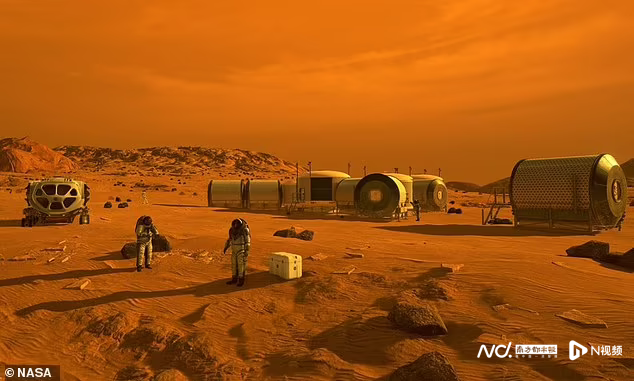If humans were to survive on Mars, it would mean maximizing the use of all available resources, including astronaut excrement. Scientists have come up with a solution to use sunlight to convert these wastes into fuel. Currently, a team in Spain is working on the system.

If humans were to survive on Mars, it would mean maximizing the use of all available resources.
A team at Spanish technology center Tekniker is reportedly working on a system that converts astronaut excrement into rocket fuel. This will involve building "the first reactor to produce space propellant using Martian air" on Mars, 95 percent of which is carbon dioxide.
The reactor will be powered by sunlight, and the conversion process will also detoxify the water used.
Jean-Christophe Berton, a technical officer at the European Space Agency (ESA) in charge of the project, said the results of the event could provide an invaluable reference for the ESA to produce propellants on Mars or power remote sites such as ground stations on Earth.
Photochemical systems will rely on highly efficient catalytic materials of carbon dioxide plus wastewater to produce hydrocarbons such as methane, carbon monoxide or alcohol.
Tekniker's Borja Pozo said the goal is to build the first reactor to produce space propellants using 95 percent carbon dioxide from the Martian atmosphere.
In space missions where materials may be scarce, he said, carbon dioxide appears to be a valuable resource for producing chemicals and fuels.
The goal of the project is to provide an improved optoelectronic chemistry (PEC) system to reduce carbon dioxide and link it to wastewater treatment. In this sense, the oxidation of organic components (including pathogens) in PEC batteries in sewage will detoxify the water and make it reusable for other purposes.
The electrons subtracted from this process will reduce carbon dioxide in the cathode, producing fuel by using solar light as a direct conversion of energy.
A team at Washington University in St. Louis has also developed a system to convert unusable water on Mars into fuel and oxygen.
Tekniker isn't the first organization or company to come up with the idea of creating fuel on Mars.
One of the biggest obstacles to a manned mission to Mars is that it would cost $8 billion to transport 30 tons of methane and liquid oxygen to power the returning rocket.
Last October, researchers at the Georgia Institute of Technology in the United States proposed a way to use natural resources found on the surface of Mars to cultivate bacteria that can be converted into fuel.
In 2020, a team at Washington University in St. Louis also developed a system to convert unusable water on Mars into fuel and oxygen. The experiment was launched to Mars with the rover in July 2020 and produced 25 times more oxygen than NASA's Mars in situ oxygen resource utilization experiment.
Text/Nandu reporter Chen Lin